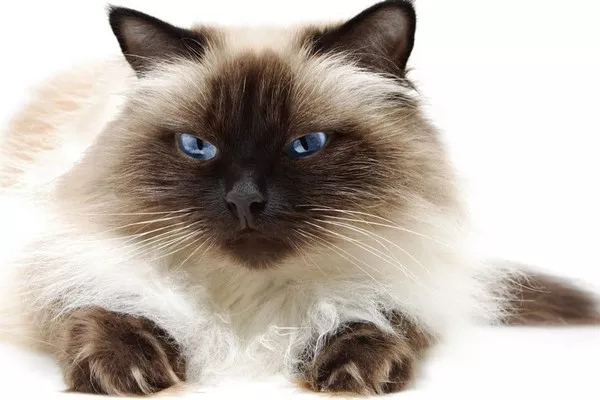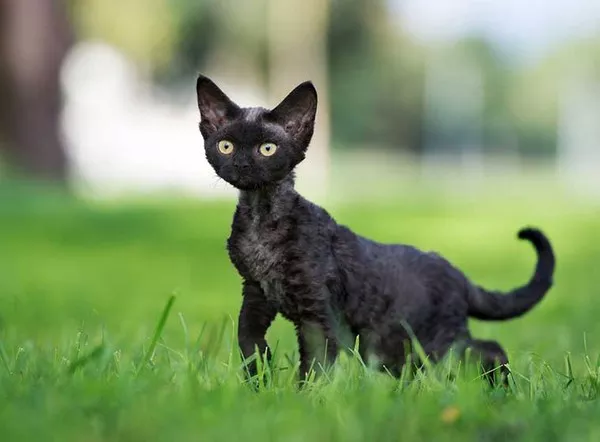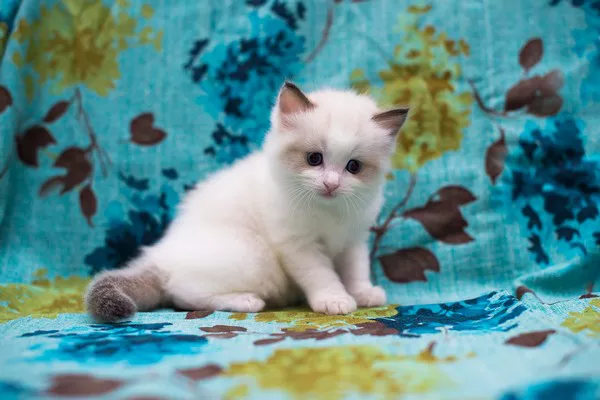The Himalayan cat, with its luxurious long fur, striking color points, and captivating blue eyes, is a breed that has captured the hearts of cat lovers around the world. Often described as the “Himmie,” these cats are known for their calm and gentle temperament, making them cherished companions. However, the history and discovery of the Himalayan cat are as intriguing as their appearance. In this comprehensive article, we will explore the origins, development, and discovery of the Himalayan cat breed.
The Himalayan Cat Breed Overview
Before we delve into the history of the Himalayan cat’s discovery, let’s start with an overview of the breed itself. The Himalayan cat is a breed that originated from crossing two well-known and beloved breeds: the Persian cat and the Siamese cat. Here are some key characteristics of the Himalayan cat:
Appearance
Himalayan cats are characterized by their striking color points, which are darker shades of fur on their ears, face, paws, and tail, contrasting with a lighter body color. Their coat is long, silky, and luxurious, requiring regular grooming to maintain its beauty and prevent matting.
One of the most captivating features of the Himalayan cat is its striking blue, almond-shaped eyes, which add to its regal and enchanting appearance. They have a medium-sized body with a sweet, rounded face and a short, flat nose.
Personality
Himalayan cats are renowned for their gentle and affectionate nature. They are known to be calm, sociable, and loving companions. These cats often form strong bonds with their human family members and enjoy being in their presence.
Their temperament is described as easygoing, and they tend to be laid-back and adaptable, making them well-suited for indoor living. Himalayan cats are not typically known for being vocal like their Siamese ancestors but may occasionally express themselves with soft, melodic meows.
Care Requirements
Due to their long fur, Himalayan cats require regular grooming to prevent matting and keep their coat in good condition. Brushing their fur a few times a week is recommended to reduce the risk of tangles and hairballs. Additionally, they may benefit from regular eye cleaning to keep their eyes clear and free from discharge.
The Discovery and Development of the Himalayan Cat
The Himalayan cat did not have a straightforward path to discovery; instead, its development was the result of careful breeding efforts over several decades. The history of the breed’s discovery is intertwined with the stories of two well-established breeds: the Persian and the Siamese.
The Persian Connection
The foundation of the Himalayan cat breed can be traced back to the Persian cat. Persian cats, known for their long, luxurious coats and sweet personalities, were already a beloved breed in the late 19th century. Breeders sought to enhance the Persian’s appeal by introducing color points, much like those seen in Siamese cats.
The initial attempts to create color points in Persian cats faced several challenges. The Siamese breed, known for its striking color points, was crossed with Persian cats to introduce the desired trait. However, these early crosses did not yield the desired results.
The Siamese Influence
The breakthrough in developing the Himalayan cat came when breeders decided to intensify their efforts by selectively breeding Siamese cats with Persian cats. This careful crossbreeding resulted in kittens with the desired color points on a Persian-like body.
One of the pivotal moments in the breed’s history was the birth of a cat named “Newton’s Debutante” in 1930. This Siamese-Persian cross had the classic Himalayan color points and became one of the foundation cats of the breed. The breed was further refined through continued breeding programs aimed at achieving consistent color points and the distinctive Himalayan appearance.
The Name “Himalayan”
The name “Himalayan” was chosen for the breed due to the association of the Himalayan mountain range with all things exotic and mysterious. The breed’s striking appearance and enchanting blue eyes evoked images of the Himalayan mountains, leading to the adoption of the name.
Recognition and Popularity
The Himalayan cat breed gained recognition and popularity over the years, particularly in the United States. The Cat Fanciers’ Association (CFA) officially recognized the Himalayan as a distinct breed in the 1950s. Since then, Himalayan cats have become cherished companions and have earned a place in the hearts of cat enthusiasts worldwide.
Himalayan Cats Today
Today, Himalayan cats are a beloved and well-established breed, known for their charming personalities and striking appearance. They have become popular choices among cat lovers seeking a gentle and affectionate feline companion. Himalayan cats come in a variety of color points, including seal, chocolate, blue, lilac, and more.
Care and Maintenance
Himalayan cats require diligent grooming to keep their long fur in good condition. Regular brushing helps prevent matting and reduces shedding. Additionally, cleaning their eyes to prevent tear staining is a common practice among Himalayan cat owners.
Temperament
Himalayan cats are cherished for their sweet and gentle nature. They are known to be laid-back, calm, and well-suited for indoor living. These cats often enjoy lounging in cozy spots and spending quality time with their human family members.
Health Considerations
Like all cat breeds, Himalayan cats may be prone to certain health issues. These can include respiratory issues due to their flat faces (brachycephalic), dental problems, and potential kidney or heart conditions. Regular veterinary check-ups and a well-balanced diet are essential to maintaining their health.
Himalayan Cat Clubs and Organizations
Himalayan cat enthusiasts can join breed-specific clubs and organizations, such as The Himalayan Cat Club and The International Himalayan Cat Association, to connect with fellow breed enthusiasts, learn more about the breed, and participate in cat shows and events.
Conclusion
The discovery and development of the Himalayan cat were the result of dedicated breeding efforts that spanned decades. This breed’s history is intertwined with the desire to combine the striking color points of the Siamese with the luxurious coat and sweet temperament of the Persian. Today, Himalayan cats are beloved for their captivating appearance, gentle personalities, and enchanting blue eyes, making them cherished companions for cat lovers worldwide. The breed’s journey from its early beginnings to its current status as a beloved and well-recognized breed is a testament to the dedication and passion of breeders and enthusiasts who sought to create a feline companion that embodies both beauty and charm.

























